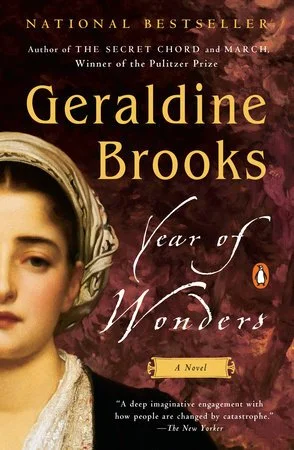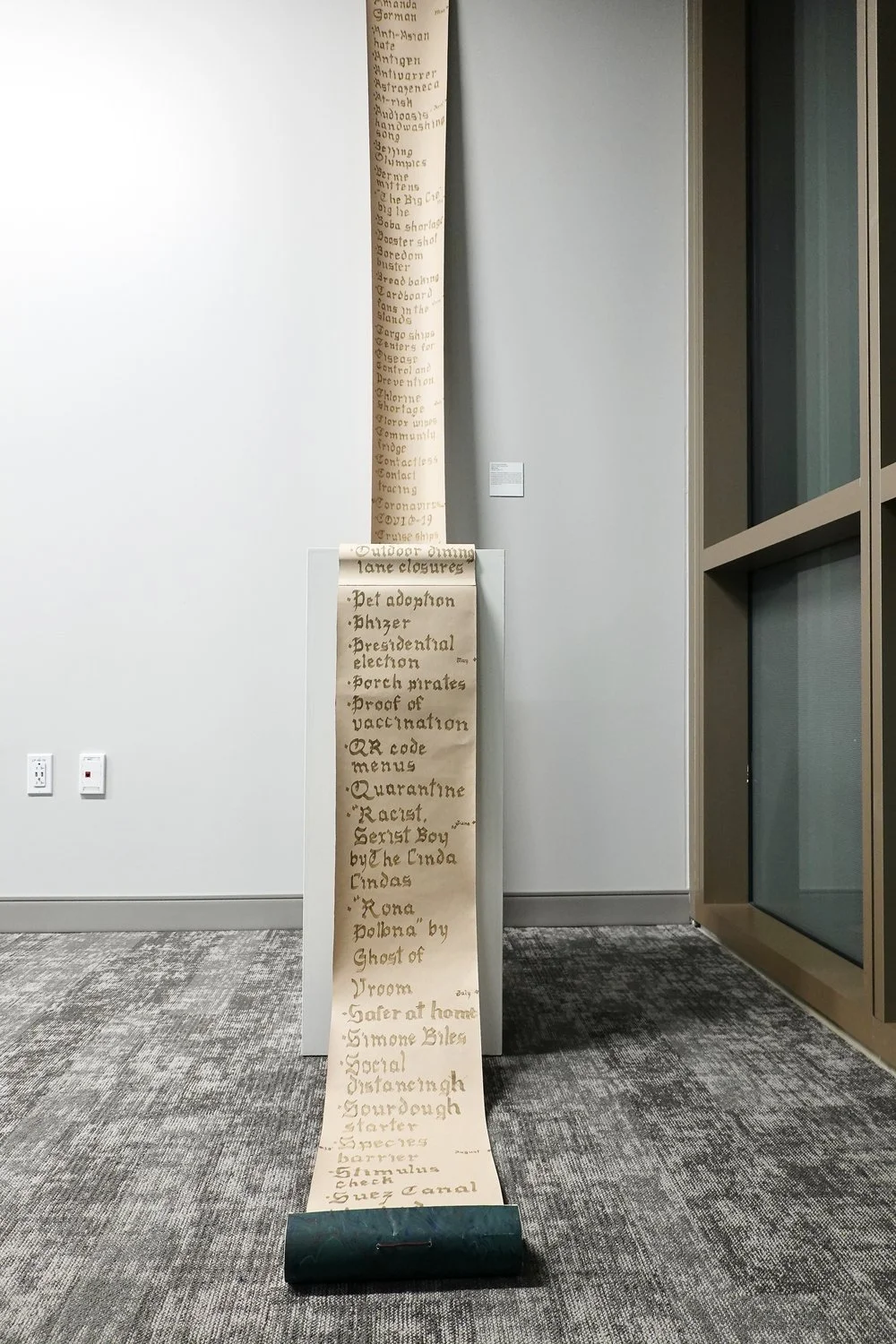Doom Scroll: Anni Mirabiles February 2020-February 2022 is a 24-foot-long paper scroll inked in February 2022, reflecting on two years of Pandemic life. It is an alphabetical record of 100 entries related to the period, handwritten in Blackletter calligraphy. The entries are a mix of references to specific world events and vocabulary that entered the general lexicon during this time. The resulting length of the scroll is both a comical and sympathetic visual for how excessively long Covid has raged, how much we’ve been through. The length is marked in 6-foot increments (the then-familiar social distancing allotment) along the left edge, and the months (1 per foot) from February 2020-February 2022 are marked along the right edge.
As you may have gathered, "Doom Scroll" is a play on "doomscrolling," the addiction to keeping up with bad news online. "Anni Mirabiles" means "years of wonders," the plural of "annus mirabilis" meaning "year of wonders." Annus Mirabilis: The Year of Wonders 1666 is an epic poem by John Dryden (published in 1667) accounting of England's miserable year when there was a major outbreak of the bubonic plague, the country was at war with Holland, and London burned in the Great Fire. ("Wonders" was a biblical term that didn't necessarily describe good things.) In 2019, I read and was very moved by the novel Year of Wonders by Geraldine Brooks (2001) set in an English "plague village" in 1665-66 and titled in reference to Dryden's work. I kept thinking of the novel once our own plague hit in 2020.
Right: Annus Mirabilis: The Year of Wonders 1666 by John Dryden from St. John’s College, University of Cambridge
Left: Year of Wonders by Geraldine Brooks from Penguin Random House
🦠🦠🦠
Doom Scroll was shown in the health/medicine themed exhibition Viral Integration at UC Irvine Susan & Henry Samueli College of Health Sciences from December 2023-December 2024. Installation views below.




















